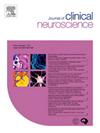Analytical and comparative study of pterional craniotomy related to temporalis muscle dissection techniques: Interfascial temporalis and myocutaneous flap
IF 1.9
4区 医学
Q3 CLINICAL NEUROLOGY
引用次数: 0
Abstract
Background and objectives
The pterional craniotomy (PT) is a widely used neurosurgery approach that provides access to various intracranial structures. This study compared the exposure provided by 2 techniques for temporalis muscle mobilization: interfascial dissection (IF) and myocutaneous flap (MF).
Methods
Eight adult cadavers underwent sequential craniotomies on the left side using both techniques. The measurement areas of surgical exposure, angular exposure, and linear exposure of the basilar artery were determined.
Results
Results showed no significant difference in the total area of exposure or linear exposure of the basilar artery between the IF and MF. However, interfascial dissection provided significantly greater vertical angular exposure.
Conclusion
Although both techniques offer comparable horizontal exposures, the choice between them should consider the anticipated working angles. The interfascial temporalis flap may be preferred for broader vertical exposure is required.
翼点开颅颞肌剥离技术的分析与比较:颞筋膜间肌与肌皮瓣
背景与目的翼点开颅术(PT)是一种广泛应用的神经外科入路,可进入各种颅内结构。本研究比较了两种颞肌动员技术:筋膜间剥离(IF)和肌皮瓣(MF)所提供的暴露。方法采用两种方法对8具成人尸体行左侧连续开颅术。确定基底动脉手术暴露、角度暴露和线性暴露的测量区域。结果在基底动脉总暴露面积和线性暴露面积上,IF和MF无显著差异。然而,筋膜间剥离提供了更大的垂直角度暴露。结论虽然两种技术的水平暴露程度相当,但在选择时应考虑预期的工作角度。当需要较宽的垂直暴露时,颞叶筋膜间皮瓣可能是首选。
本文章由计算机程序翻译,如有差异,请以英文原文为准。
求助全文
约1分钟内获得全文
求助全文
来源期刊

Journal of Clinical Neuroscience
医学-临床神经学
CiteScore
4.50
自引率
0.00%
发文量
402
审稿时长
40 days
期刊介绍:
This International journal, Journal of Clinical Neuroscience, publishes articles on clinical neurosurgery and neurology and the related neurosciences such as neuro-pathology, neuro-radiology, neuro-ophthalmology and neuro-physiology.
The journal has a broad International perspective, and emphasises the advances occurring in Asia, the Pacific Rim region, Europe and North America. The Journal acts as a focus for publication of major clinical and laboratory research, as well as publishing solicited manuscripts on specific subjects from experts, case reports and other information of interest to clinicians working in the clinical neurosciences.
 求助内容:
求助内容: 应助结果提醒方式:
应助结果提醒方式:


